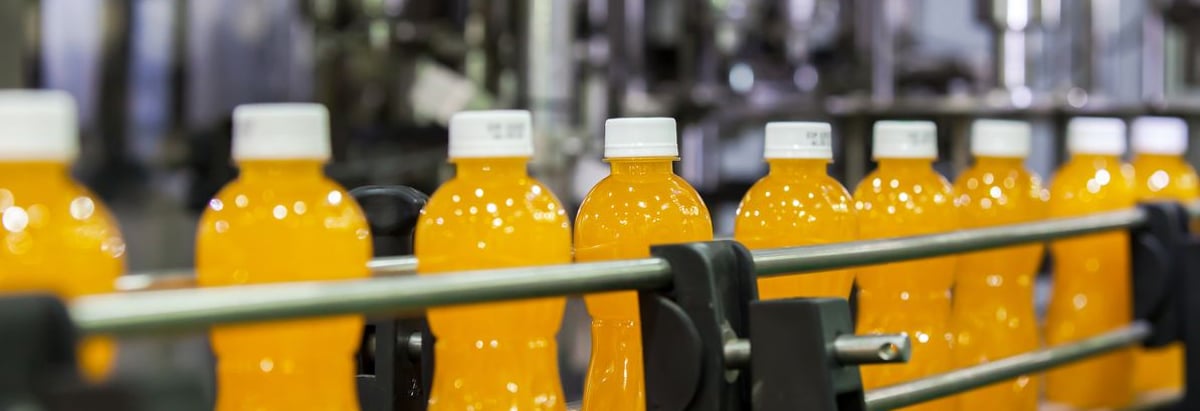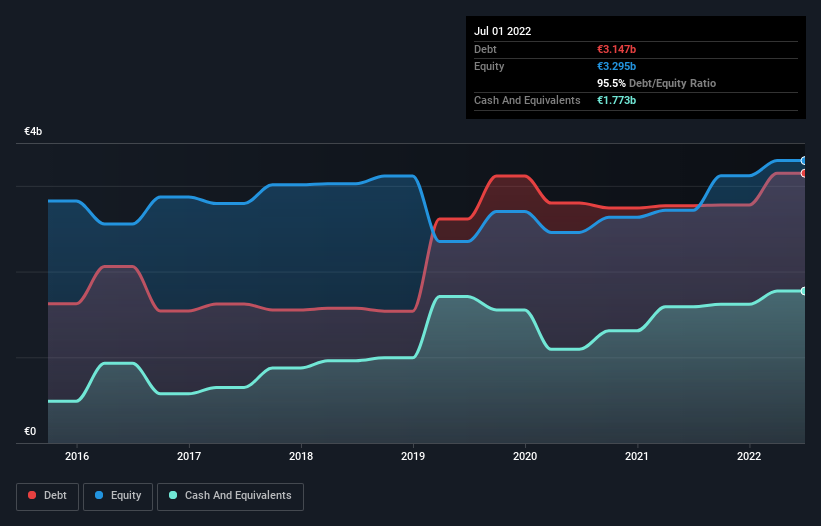- United Kingdom
- /
- Beverage
- /
- LSE:CCH
These 4 Measures Indicate That Coca-Cola HBC (LON:CCH) Is Using Debt Reasonably Well

Howard Marks put it nicely when he said that, rather than worrying about share price volatility, 'The possibility of permanent loss is the risk I worry about... and every practical investor I know worries about.' When we think about how risky a company is, we always like to look at its use of debt, since debt overload can lead to ruin. We note that Coca-Cola HBC AG (LON:CCH) does have debt on its balance sheet. But should shareholders be worried about its use of debt?
When Is Debt A Problem?
Debt and other liabilities become risky for a business when it cannot easily fulfill those obligations, either with free cash flow or by raising capital at an attractive price. If things get really bad, the lenders can take control of the business. However, a more frequent (but still costly) occurrence is where a company must issue shares at bargain-basement prices, permanently diluting shareholders, just to shore up its balance sheet. Having said that, the most common situation is where a company manages its debt reasonably well - and to its own advantage. When we examine debt levels, we first consider both cash and debt levels, together.
See our latest analysis for Coca-Cola HBC
How Much Debt Does Coca-Cola HBC Carry?
You can click the graphic below for the historical numbers, but it shows that as of July 2022 Coca-Cola HBC had €3.15b of debt, an increase on €2.77b, over one year. However, because it has a cash reserve of €1.77b, its net debt is less, at about €1.37b.

How Healthy Is Coca-Cola HBC's Balance Sheet?
We can see from the most recent balance sheet that Coca-Cola HBC had liabilities of €4.01b falling due within a year, and liabilities of €3.10b due beyond that. On the other hand, it had cash of €1.77b and €1.44b worth of receivables due within a year. So it has liabilities totalling €3.91b more than its cash and near-term receivables, combined.
While this might seem like a lot, it is not so bad since Coca-Cola HBC has a market capitalization of €8.50b, and so it could probably strengthen its balance sheet by raising capital if it needed to. But it's clear that we should definitely closely examine whether it can manage its debt without dilution.
We measure a company's debt load relative to its earnings power by looking at its net debt divided by its earnings before interest, tax, depreciation, and amortization (EBITDA) and by calculating how easily its earnings before interest and tax (EBIT) cover its interest expense (interest cover). Thus we consider debt relative to earnings both with and without depreciation and amortization expenses.
Coca-Cola HBC's net debt is only 1.1 times its EBITDA. And its EBIT easily covers its interest expense, being 13.3 times the size. So you could argue it is no more threatened by its debt than an elephant is by a mouse. And we also note warmly that Coca-Cola HBC grew its EBIT by 13% last year, making its debt load easier to handle. There's no doubt that we learn most about debt from the balance sheet. But ultimately the future profitability of the business will decide if Coca-Cola HBC can strengthen its balance sheet over time. So if you're focused on the future you can check out this free report showing analyst profit forecasts.
Finally, a business needs free cash flow to pay off debt; accounting profits just don't cut it. So the logical step is to look at the proportion of that EBIT that is matched by actual free cash flow. During the last three years, Coca-Cola HBC generated free cash flow amounting to a very robust 82% of its EBIT, more than we'd expect. That puts it in a very strong position to pay down debt.
Our View
Coca-Cola HBC's interest cover suggests it can handle its debt as easily as Cristiano Ronaldo could score a goal against an under 14's goalkeeper. But truth be told we feel its level of total liabilities does undermine this impression a bit. When we consider the range of factors above, it looks like Coca-Cola HBC is pretty sensible with its use of debt. While that brings some risk, it can also enhance returns for shareholders. The balance sheet is clearly the area to focus on when you are analysing debt. But ultimately, every company can contain risks that exist outside of the balance sheet. These risks can be hard to spot. Every company has them, and we've spotted 3 warning signs for Coca-Cola HBC you should know about.
If, after all that, you're more interested in a fast growing company with a rock-solid balance sheet, then check out our list of net cash growth stocks without delay.
New: AI Stock Screener & Alerts
Our new AI Stock Screener scans the market every day to uncover opportunities.
• Dividend Powerhouses (3%+ Yield)
• Undervalued Small Caps with Insider Buying
• High growth Tech and AI Companies
Or build your own from over 50 metrics.
Have feedback on this article? Concerned about the content? Get in touch with us directly. Alternatively, email editorial-team (at) simplywallst.com.
This article by Simply Wall St is general in nature. We provide commentary based on historical data and analyst forecasts only using an unbiased methodology and our articles are not intended to be financial advice. It does not constitute a recommendation to buy or sell any stock, and does not take account of your objectives, or your financial situation. We aim to bring you long-term focused analysis driven by fundamental data. Note that our analysis may not factor in the latest price-sensitive company announcements or qualitative material. Simply Wall St has no position in any stocks mentioned.
About LSE:CCH
Coca-Cola HBC
Engages in the production, distribution, and sale of non-alcoholic ready-to-drink beverages under franchise in Switzerland, the United Kingdom, North and Central America, rest of Europe, the Nordic countries, and internationally.
Established dividend payer and good value.


